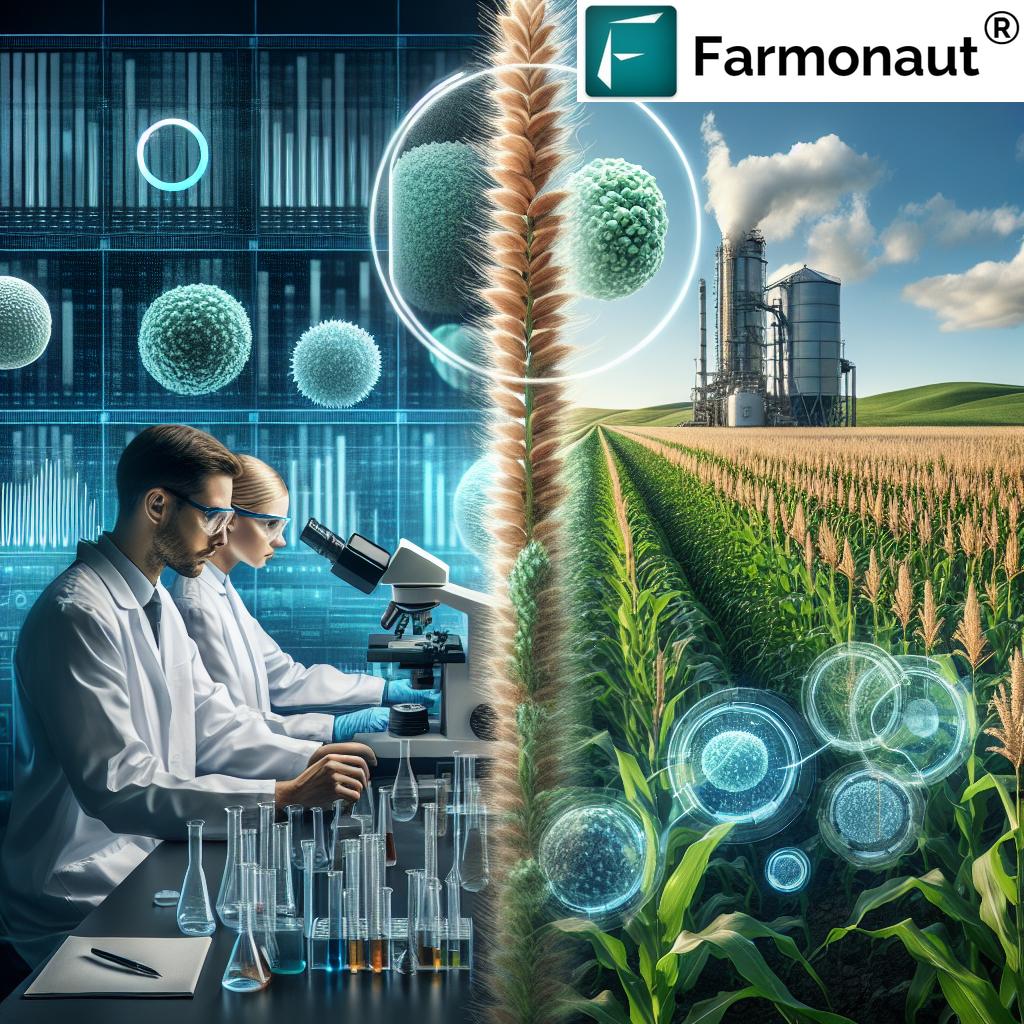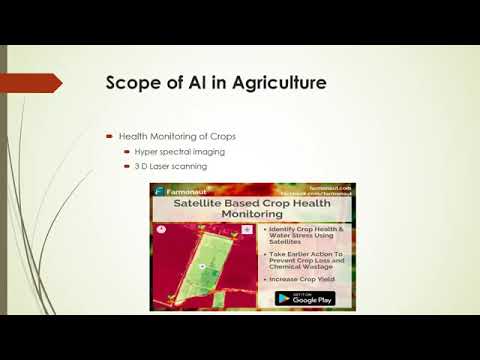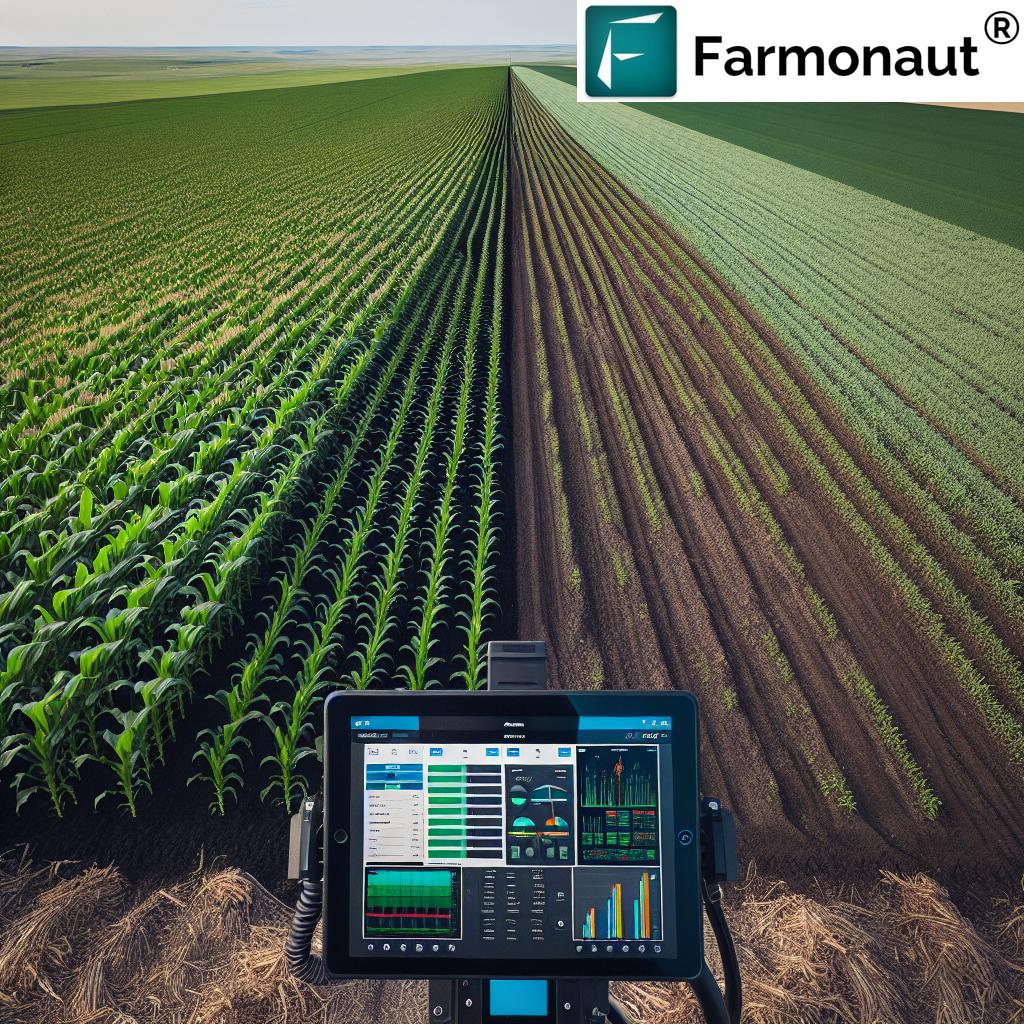Health Canada’s Groundbreaking Guidance on Gene-Edited Crops: Advancing Agricultural Innovation in Canada
“Health Canada’s guidance on gene-edited crops impacts approximately 38 million Canadians and their food supply.”
In the ever-evolving landscape of agricultural biotechnology, Health Canada’s recent guidance on gene-edited crops marks a significant milestone in the realm of modern plant breeding techniques. This groundbreaking decision not only reshapes the regulatory approach to agricultural innovation but also sets the stage for a new era of sustainable farming practices in Canada and beyond. As we delve into this transformative development, we’ll explore its far-reaching implications for farmers, crops, and food security, while shedding light on the cutting-edge world of gene-edited crops and their potential to revolutionize farming.

The Dawn of a New Agricultural Era
As we march into a future fraught with climate change challenges and growing food demands, the agricultural sector finds itself at a critical juncture. The guidance issued by Health Canada in March of this year represents a pivotal moment in the ongoing dialogue surrounding genetically modified organisms (GMOs) and novel breeding techniques. This decision not only aligns Canada with other progressive nations but also paves the way for unprecedented advancements in crop resilience and productivity.
At Farmonaut, we recognize the immense potential of gene-editing technologies like CRISPR in revolutionizing agriculture. Our satellite-based crop health monitoring system complements these advancements by providing farmers with real-time insights into their fields, enabling them to make informed decisions about resource allocation and crop management.
Understanding Gene-Edited Crops
Gene-edited crops represent the pinnacle of modern plant breeding techniques. Unlike traditional GMOs, which often involve introducing foreign DNA into plants, gene editing allows scientists to make precise modifications to a plant’s existing genetic code. This approach offers several advantages:
- Enhanced precision in trait selection
- Faster development of new varieties
- Potential for improved nutritional content
- Increased resistance to pests and diseases
- Better adaptation to changing climate conditions
The CRISPR-Cas9 system, in particular, has emerged as a game-changer in the field of agricultural biotechnology. Its ability to target specific genes with unprecedented accuracy has opened up new possibilities for crop improvement that were once thought impossible.
Health Canada’s Guidance: A Closer Look
Health Canada’s new guidance on gene-edited crops represents a significant shift in the regulatory landscape. The key points of this guidance include:
- Recognition of gene editing as distinct from traditional genetic modification
- Streamlined approval process for certain gene-edited crops
- Focus on the final product rather than the process used to create it
- Emphasis on case-by-case safety assessments
- Commitment to transparency and public engagement
This approach aligns Canada with countries like the United States and Japan, which have adopted similar stances on gene-edited crops. It also positions Canada as a potential leader in agricultural innovation within North America.
Implications for Canadian Agriculture
The new guidance from Health Canada has far-reaching implications for the Canadian agricultural sector. For farmers in regions like Southwest Michigan and beyond, this could mean:
- Access to a wider variety of crop options
- Potential for increased yields and profitability
- Reduced reliance on chemical pesticides and fertilizers
- Better adaptation to local climate conditions
- Opportunities for diversification and niche market development
Family farms, which form the backbone of Canadian agriculture, stand to benefit significantly from these advancements. The ability to grow crops that are more resilient to pests, diseases, and environmental stresses could provide a much-needed boost to small and medium-sized agricultural operations.
Explore Farmonaut’s API for advanced agricultural insights
Global Context: Canada’s Position in the International Arena
Canada’s move to embrace gene-edited crops places it among a growing number of countries recognizing the potential of this technology. Let’s examine how this decision compares to approaches in other nations:
| Country | Regulatory Approach | Key Agencies Involved | Approved Gene-Editing Techniques | Labeling Requirements | Safety Assessment Process | Estimated Number of Approved Gene-Edited Crops |
|---|---|---|---|---|---|---|
| Canada | Product-based | Health Canada, CFIA | CRISPR, TALENs, ZFNs | Case-by-case basis | Focused on final product characteristics | 5-10 (as of 2023) |
| USA | Product-based | USDA, FDA, EPA | CRISPR, TALENs, ZFNs | Not required for most gene-edited crops | Tiered approach based on risk assessment | 15-20 (as of 2023) |
| Denmark | Process-based (EU regulations) | Danish EPA, EFSA | Limited approval under EU framework | Required for all GMOs, including gene-edited crops | Rigorous, case-by-case evaluation | 0-2 (as of 2023, under EU regulations) |
| Global Trend | Moving towards product-based approaches | Varied, with increasing coordination | CRISPR emerging as the dominant technique | Trend towards reduced labeling for gene-edited crops | Increasing focus on trait-specific assessments | Growing rapidly, estimated 50+ globally |
This comparative analysis highlights the diverse approaches to regulating gene-edited crops worldwide. While countries like Canada and the USA are adopting more flexible, product-based regulatory frameworks, regions like Europe maintain stricter controls. This global landscape underscores the importance of international dialogue and cooperation in shaping the future of agricultural biotechnology.
The Role of CRISPR in Agricultural Innovation
“CRISPR gene-editing technology can potentially modify over 20,000 genes in a single plant species.”
CRISPR (Clustered Regularly Interspaced Short Palindromic Repeats) technology has emerged as a revolutionary tool in gene editing, offering unprecedented precision and efficiency. In the context of agriculture, CRISPR holds immense potential for crop improvement:
- Enhancing nutritional content of staple crops
- Developing drought and heat-tolerant varieties
- Creating disease-resistant plants
- Improving crop yield and quality
- Reducing allergenic proteins in foods
The application of CRISPR in agriculture aligns perfectly with Farmonaut’s mission to make precision agriculture accessible to farmers worldwide. By combining gene-editing technologies with our satellite-based crop monitoring systems, we can offer farmers a comprehensive toolkit for maximizing their yields while minimizing environmental impact.
Check out our API Developer Docs for seamless integration
Addressing Climate Change Through Gene-Edited Crops
One of the most promising aspects of gene-edited crops is their potential to address the challenges posed by climate change. As we face increasingly unpredictable weather patterns and extreme events, the need for resilient crops has never been greater. Gene editing offers several avenues for developing climate-smart agriculture:
- Creating drought-tolerant varieties that require less water
- Developing heat-resistant crops that can withstand higher temperatures
- Enhancing carbon sequestration capabilities in plants
- Improving nitrogen use efficiency to reduce fertilizer requirements
- Breeding salt-tolerant crops for areas affected by rising sea levels
At Farmonaut, we recognize the importance of these advancements in the face of climate change. Our satellite-based monitoring systems provide valuable data on changing environmental conditions, allowing farmers to adapt their practices and select the most suitable crop varieties for their specific contexts.
Balancing Innovation and Safety in Agricultural Biotech
While the potential benefits of gene-edited crops are substantial, it’s crucial to maintain a balanced approach that prioritizes both innovation and safety. Health Canada’s guidance reflects this balance by:
- Emphasizing rigorous safety assessments for novel foods
- Encouraging transparency in the development and approval process
- Maintaining flexibility to adapt regulations as technology evolves
- Promoting public engagement and education on gene editing
- Collaborating with international partners to harmonize standards
This approach ensures that Canada can harness the benefits of agricultural biotechnology while maintaining high standards of food safety and environmental protection. It also aligns with Farmonaut’s commitment to providing farmers with tools that are both innovative and responsible.

The Future of Sustainable Agriculture
As we look towards the future, the integration of gene-edited crops into sustainable farming practices holds tremendous promise. This convergence of biotechnology and traditional agriculture could lead to:
- Reduced environmental impact of farming
- Increased food security and nutritional quality
- More efficient use of land and water resources
- Enhanced biodiversity through targeted trait development
- Greater resilience in the face of climate change
Farmonaut’s role in this future is clear: by providing advanced satellite-based monitoring and AI-driven insights, we empower farmers to make the most of these new crop varieties. Our technology complements gene-editing advancements by offering precise, real-time data on crop health and environmental conditions.
The Role of Artificial Intelligence in Agriculture
As we embrace gene-edited crops and advanced breeding techniques, the role of artificial intelligence (AI) in agriculture becomes increasingly significant. AI complements these biotechnological advancements by:
- Analyzing vast datasets to identify optimal genetic modifications
- Predicting crop performance under various environmental conditions
- Optimizing resource allocation and farm management practices
- Enhancing pest and disease detection through image recognition
- Facilitating precision agriculture through data-driven insights
At Farmonaut, we leverage AI through our Jeevn AI Advisory System, which provides personalized farm management recommendations based on satellite data and advanced analytics. This synergy between AI and gene-edited crops represents the cutting edge of agricultural innovation, promising to revolutionize farming practices worldwide.
Conclusion: Embracing a New Era of Agricultural Innovation
Health Canada’s groundbreaking guidance on gene-edited crops marks the beginning of a new chapter in agricultural innovation. As we navigate this exciting frontier, it’s clear that the integration of advanced biotechnology, AI-driven insights, and sustainable farming practices will be crucial in addressing the global challenges of food security and climate change.
At Farmonaut, we’re committed to being at the forefront of this agricultural revolution. Our satellite-based monitoring systems, AI advisory tools, and commitment to sustainable practices align perfectly with the goals of gene-edited crop development. Together, these technologies offer a comprehensive solution for farmers looking to maximize yields, minimize environmental impact, and adapt to changing climate conditions.
As we move forward, it’s essential to maintain an open dialogue between scientists, policymakers, farmers, and consumers. By fostering understanding and collaboration, we can ensure that the benefits of gene-edited crops and other agricultural innovations are realized responsibly and equitably.
The future of agriculture is here, and it’s more promising than ever. With continued research, responsible regulation, and innovative technologies like those offered by Farmonaut, we’re poised to usher in a new era of sustainable, productive, and resilient farming practices that will benefit generations to come.
FAQs
- What are gene-edited crops?
Gene-edited crops are plants that have had their DNA modified using precise gene-editing techniques like CRISPR, without introducing foreign genetic material. - How does Health Canada’s guidance on gene-edited crops differ from previous regulations?
The new guidance focuses on the final product rather than the process, allowing for a more streamlined approval process for certain gene-edited crops. - Are gene-edited crops the same as GMOs?
While both involve genetic modification, gene-edited crops typically involve more precise changes to existing genes, whereas GMOs often involve introducing genes from other species. - How can gene-edited crops help address climate change?
Gene-edited crops can be developed to be more resilient to drought, heat, and pests, helping agriculture adapt to changing climate conditions. - What role does Farmonaut play in the adoption of gene-edited crops?
Farmonaut provides satellite-based crop monitoring and AI-driven insights that complement gene-editing technologies, helping farmers optimize their use of these advanced crop varieties.




















